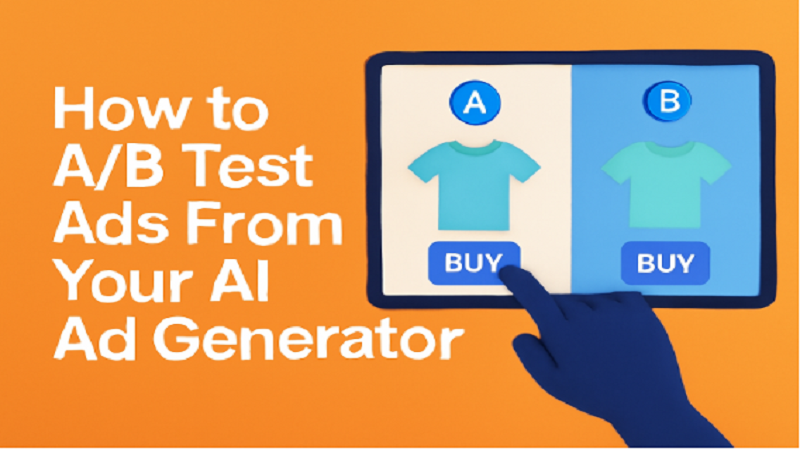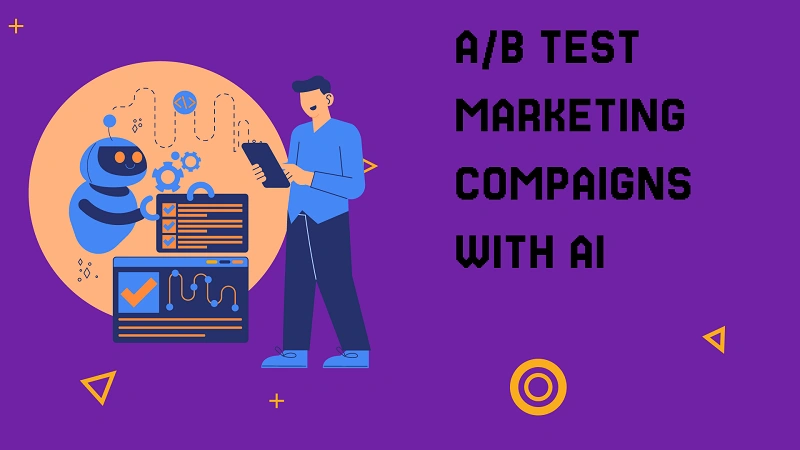A/B testing, also known as split testing, is the process of comparing two or more versions of an ad to determine which performs better with your audience. But thanks to the rise of AI ad generators, this process no longer takes weeks or a huge creative team
AI makes it easy to create dozens of ad variations in minutes, test them at scale, and double down on what works. It’s the fastest, smartest way to squeeze more ROI out of your media spend without burning out your creative department.
Why Use AI Ad Generators for A/B Testing
Traditional A/B testing was time-consuming. You’d have to brainstorm five new hooks, brief a designer, wait for edits, and only then go live. An ai ad generator flips that workflow.
These tools automate the creative process, generating variations in copy, visuals, format, tone, and CTA in just a few clicks. Some even let you push directly to platforms like Meta, TikTok, or Google.
You can now test
- Multiple value props (e.g. “fast shipping” vs. “eco-friendly”)
- Different tones (witty vs. formal)
- Format shifts (ai ad generator video vs. static carousel)
All while saving time and lowering costs.
Step-by-Step Guide to A/B Testing with AI Ad Generators

Step 1, Define Your Objectives and Metrics
Before you launch anything, know your goal.
Is it more clicks? Lower cost-per-conversion? Better engagement? Choose one or two key performance indicators (KPIs) to guide your test.
Examples include
- CTR (click-through rate)
- CVR (conversion rate)
- ROAS (return on ad spend)
- CPC (cost per click)
Once you define success, everything else becomes easier to track and optimize.
Step 2, Choose Variables to Test
Don’t try to test everything at once. Choose one variable per experiment. This gives you clarity on what’s really working.
Common variables include
- Headlines or opening lines
- Images vs. ai ad generator video formats
- CTA button copy (“Buy Now” vs. “Learn More”)
- Ad tone (direct, emotional, humorous)
- Platform or placement (Reels vs. Stories)
Pro tip, Start with high-impact changes (like headlines) before testing micro-optimizations.
Step 3, Generate Variations With Your AI Tool
Now comes the fun part. Use your ai ad generator to instantly produce 3–5 ad versions focused on your chosen variable.
Let’s say you’re testing headline tone. Input your base content, then ask the AI to generate variants like
- Problem-solution
- Testimonial-style
- Urgency-driven
- Curiosity hook
If your platform offers personalization, tweak the creative for each audience segment (first-time buyers vs. returning customers).
Step 4, Launch and Distribute Your Ads
Publish your ad variations across your selected platforms, Facebook, Instagram, Google, TikTok.
Most of the best ai ad generator tools now offer direct integrations with these platforms, so you can launch campaigns from inside the tool.
Set equal budgets and similar targeting across all ad sets so performance results are apples-to-apples.
Pro tip, Run the test long enough to gather statistically significant data. Don’t call a winner after 12 clicks.
Step 5, Monitor Performance in Real-Time
Use the analytics dashboard inside your AI platform or native ad platform to track
- Clicks and conversions
- Scroll depth or engagement rate
- Time on landing page
If you’re using an ai ad generator free version, you may need to connect to Meta Ads Manager or Google Analytics for deeper insights.
Bonus, Some paid tools offer AI-based insights that automatically surface high-performing themes or drop-off points in the funnel.
Step 6, Analyze Results and Take Action
Once enough data has rolled in, compare the metrics.
Did the emotional headline outperform the benefit-driven one?
Did video outperform static?
The winning variant becomes your new baseline. You can either scale that creativity or use its structure to guide your next test.
Some tools will even suggest your next test based on past performance, turning your creative workflow into a continuous improvement engine.
Best Practices for A/B Testing With AI
Test One Variable at a Time
It’s tempting to test new copy, visuals, and CTA buttons all at once. But if you do that, you won’t know which element moved the needle.
Write a Hypothesis
Instead of just “let’s test this,” frame it as:
“A more benefit-focused headline will increase CTR by 10% compared to a feature-led one.”
Personalize by Audience
Use AI’s ability to segment audiences and adapt creatively. Run different variants for cold traffic vs. retargeting audiences, or mobile users vs. desktop.
Keep Learning From Every Test
Each test is a data point. Even if both versions underperform, you’re learning what not to do. Feed those insights into your next test.
Consider External Factors
Platform algorithm updates, ad fatigue, seasonality, these all affect performance. Don’t assume your AI-generated ad failed if it was launched the week before Black Friday.
Hypothetical Example
Imagine you’re launching a campaign for a fitness app. Your AI ad generator produces 3 ad variants:
- Headline focused on “Get in shape fast”
- Headline focused on “Workouts for busy professionals”
- Headline focused on “Lose belly fat without the gym”
You push all three to Meta with the same image and CTA. After a week, version 2 leads with a 22% higher click-through rate.
You now have real evidence that your core audience values time-saving over visual transformation. That insight alone can shape your next 10 ads and your landing page.
Final Word, Turn AI Into Your Testing Advantage
AI ad generators don’t just make ads faster. They make testing smarter.
By using AI to scale creative production, manage distribution, and surface performance insights, you get to focus on strategy and storytelling, not busywork.
A/B testing becomes less about guesswork and more about pattern recognition. That’s how great marketers win.
Use AI to explore angles, test variations, and adapt quickly and your next winning ad might be one you hadn’t thought of until the AI suggested it.

